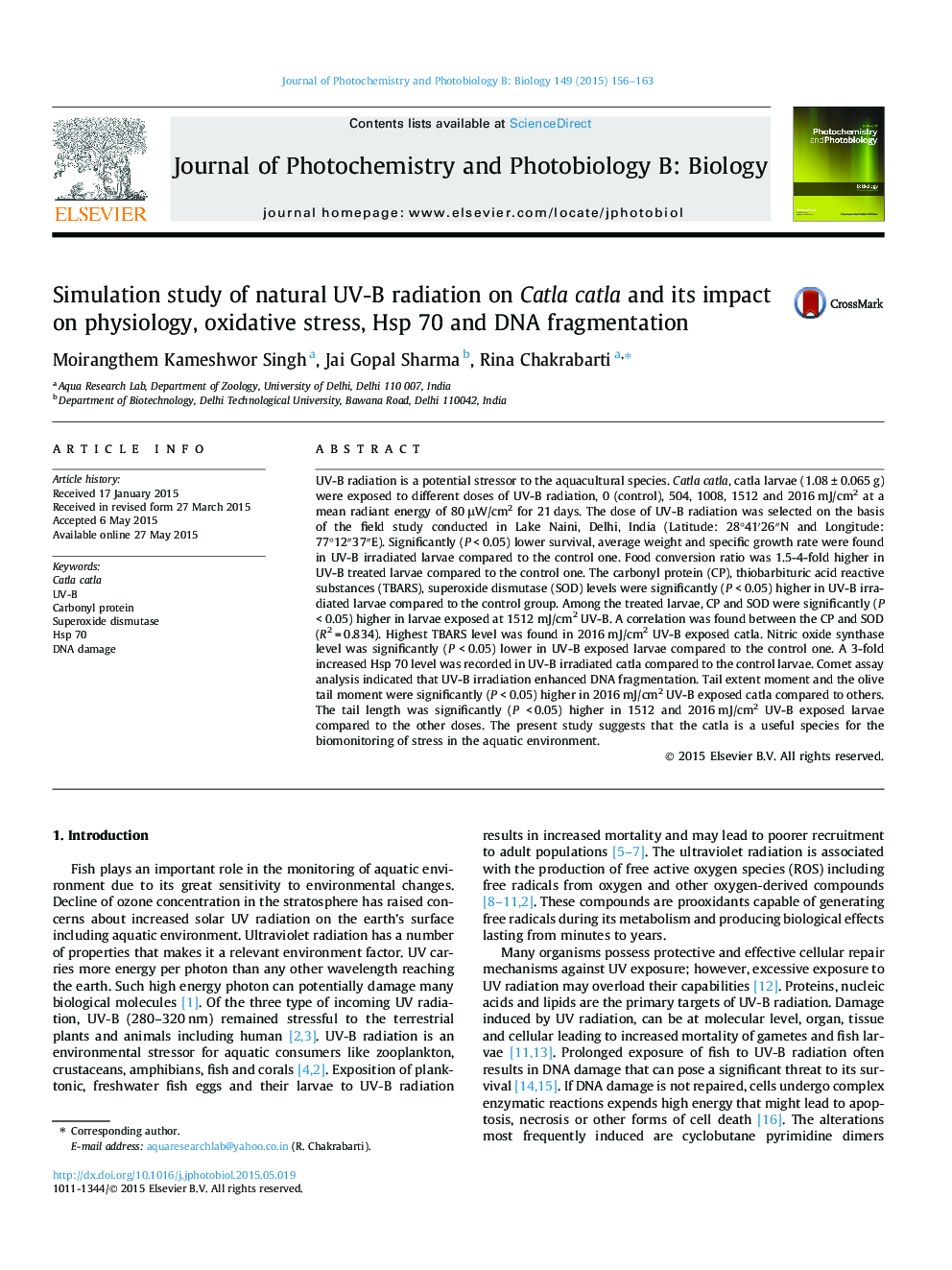| Article ID | Journal | Published Year | Pages | File Type |
|---|---|---|---|---|
| 6493791 | Journal of Photochemistry and Photobiology B: Biology | 2015 | 8 Pages |
Abstract
UV-B radiation is a potential stressor to the aquacultural species. Catla catla, catla larvae (1.08 ± 0.065 g) were exposed to different doses of UV-B radiation, 0 (control), 504, 1008, 1512 and 2016 mJ/cm2 at a mean radiant energy of 80 μW/cm2 for 21 days. The dose of UV-B radiation was selected on the basis of the field study conducted in Lake Naini, Delhi, India (Latitude: 28°41â²26â³N and Longitude: 77°12â³37â³E). Significantly (P < 0.05) lower survival, average weight and specific growth rate were found in UV-B irradiated larvae compared to the control one. Food conversion ratio was 1.5-4-fold higher in UV-B treated larvae compared to the control one. The carbonyl protein (CP), thiobarbituric acid reactive substances (TBARS), superoxide dismutase (SOD) levels were significantly (P < 0.05) higher in UV-B irradiated larvae compared to the control group. Among the treated larvae, CP and SOD were significantly (P < 0.05) higher in larvae exposed at 1512 mJ/cm2 UV-B. A correlation was found between the CP and SOD (R2 = 0.834). Highest TBARS level was found in 2016 mJ/cm2 UV-B exposed catla. Nitric oxide synthase level was significantly (P < 0.05) lower in UV-B exposed larvae compared to the control one. A 3-fold increased Hsp 70 level was recorded in UV-B irradiated catla compared to the control larvae. Comet assay analysis indicated that UV-B irradiation enhanced DNA fragmentation. Tail extent moment and the olive tail moment were significantly (P < 0.05) higher in 2016 mJ/cm2 UV-B exposed catla compared to others. The tail length was significantly (P < 0.05) higher in 1512 and 2016 mJ/cm2 UV-B exposed larvae compared to the other doses. The present study suggests that the catla is a useful species for the biomonitoring of stress in the aquatic environment.
Related Topics
Physical Sciences and Engineering
Chemical Engineering
Bioengineering
Authors
Moirangthem Kameshwor Singh, Jai Gopal Sharma, Rina Chakrabarti,
